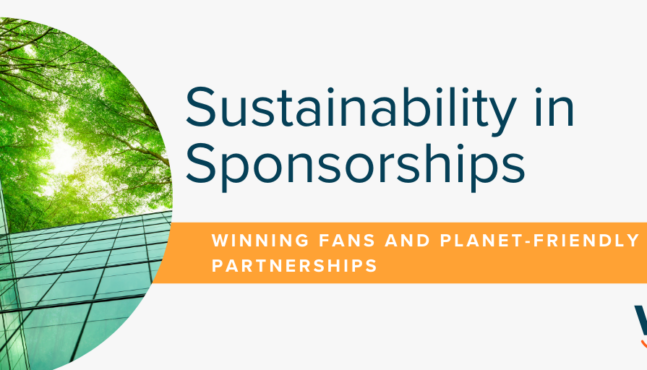
How to Find New Business Leads for Your Agency
For agencies and marketing firms, creating a new business process can be a real struggle. Many lack a dedicated sales and business development person and even more do not use technology/resources that can effectively help their prospecting and outreach efforts at all.
Since most of my day is spent talking to agencies about ways to grow their businesses to the next level, there are some common themes that I see pop up over and over again.
Free tools are free for a reason
A really difficult conversation to have is the one I have with agency people about why sales is an important function. Often, they don’t know how to go about conducting sales and the processes behind a sales organization because they’re normally doing non-sales activities within the agency. They’re not reaching out and cold calling or spending a large portion of their day prospecting for new business.
The majority of the time, before an agency uses a tool like Winmo, probably nine out of ten of them use free tools. When I say free, I mean Google searches, LinkedIn searches or they own an internal list that they’ve had for years from referrals and networking events. These all tend to be pretty ineffective and time consuming. Not to fault the agency here, that’s just how they’ve always grown – it’s the process they’ve always known. The problem is, at the core of it, agencies for the most part aren’t sales people and they feel uncomfortable going after business that wasn’t referred over to them.
A sales team, whether it’s a one to two person team or a team of 10 to 15, will require a CRM of some kind. I’m not saying Salesforce is the answer because it’s not for everybody but some sort of CRM has to be in place to let them log their calls, their conversations and set up future tasks. I don’t care how smart you are or how well you think you have your business covered, there’s always going to be things that fall off and into the dark abyss. You need reminders from technology to say, “Hey, I’ve set up 17 tasks for tomorrow, I need to go and hit these guys back.”
A few years ago, I worked for a telecom company and our CRM consisted of a shoebox with tabs labeled A, B, C, etc. Within the shoebox, business cards would be stapled to index cards with hand written notes on the index card. Anytime we wanted to go back to a prospect, we had to rummage through the shoebox to find the person with their information to call. Sometimes these cards didn’t have notes at all – you can imagine how much help that was going into a phone call. You guessed it, ZERO help! Luckily, those days are now over but some agencies still do this. They admit to working off sales spreadsheets in Excel and on sticky notes. How they ever expect to keep track of anything is beyond me. Instead, they hope their work is so ground breaking that it speaks for itself and clients come knocking down their doors. Unfortunately, that’s not the reality for most small-to-midsized agencies.
Winmo is an ideal prospecting tool for many reasons but one key way it’s used to help those who would rather pull out their fingernails than to make a cold call is the ability to have information pushed to you versus having to always go out there and find it. I think that’s the most intimidating thing when it comes to prospecting, especially for agency new business directors, is actually doing the research. And for those agencies that don’t have a dedicated person for new business, they pawn that function off on someone who doesn’t enjoy selling and who doesn’t want to do it in the first place. Raise your hand if you know this to be true.
Takeaway: You’re going to pay for prospecting research one way or another. Whether it’s by investing in a tool that has the marketing decision makers and intelligence already identified or whether it’s by you wasting time and energy trying to uncover the contacts and intelligence on your own, a cost will be associated to both. It’s up to you to decide which option is most optimal for your growth objectives.
Why referrals aren’t always the best way to get new clients
People come to your agency from all over and you might feel like you have to accept the work because you don’t have many other ways to obtain new clients. If your agency had a proactive approach to winning new business you can be pickier on who you want to work with and, in turn, not feel like you have to take every piece of referral work simply because you must keep the lights on.
With referrals, you’d like to think they’re the hottest leads on the planet. More times than not, the person being referred has been misinformed about what you do or misinformed about your price. In reality, they’re often not as teed up as you’d like to think.
Also, when you get referrals, there’s a good chance they don’t fit the scope of business your agency team members want to work on. Often times, they don’t have the appropriate budget to warrant your services and it doesn’t make sense for you or for them to partner with. This is simply because their business is not going to help enhance your portfolio.
Agencies want to maintain their reputation as go-getters and pioneers. As a result, most agency owners will always accept the businesses that have money to pay out. I’ve also seen pride play a big factor in these decisions to take on clients who don’t fit the agency portfolio and competencies only because they don’t want their agency to seem incompetent or unwilling to take on the work. So, instead of turning down the company like they probably should have to start with, they end up taking it on and learning as they go. This is risky for a couple of reasons:
- Learning on the fly leads to errors – errors lead to unhappy clients – unhappy clients lead to the agency being fired.
- If the people working on the account aren’t passionate about the work they’re doing from day one, the work will struggle – period.
Takeaway: Don’t take on work that doesn’t excite you or doesn’t fit with what you want to be known for, just to have the work. It will confuse future clients about your brand and expertise. Most importantly, it will demotivate your team.
How to do outreach without annoying people
It’s tough. You have to get creative and find different ways to get your value proposition across. Personally, I like to reach out with an offering of some value to the prospect first. I’m not asking for anything here, I’m letting them know the problems we solve. Later on, I can ask for their time to review our services. Then after the fifth or sixth time if they still haven’t respond to me then I take the hint and I move on.
However, outreach to an individual definitely isn’t an everyday thing. You want to be top of mind but you don’t want to become a pest. DO NOT reach out day after day after day. You need to give your prospects a few days to a week in between each contact before moving to the next. As equally as important, don’t reach out once and then wait three weeks before you reach out again because at tha point, they’re going wonder, “Who is this person?”
If you feel like reaching out more than once is “bothering” someone, it’s vital that you understand that’s the way sales works. It’s simply part of the territory.
Takeaway: If you want to make sales, you have to build relationships, and that’s an everyday activity.
Why your sales goals need to be achievable and realistic
People who come from a sales background will always be your best choice when recruiting for a VP or director of new business development, whether internally or externally. However, in most cases, agencies will put new business efforts as a responsibility of all employees. The problem then becomes lack of ownership for those growth efforts. Outreach is about persistency and consistency. If you’ve never been in sales before, it can be extremely intimidating to have a target of “five new clients by end of the year.” Luckily, agencies don’t have to get all five clients on day one. The best way to land these new clients is by taking small bites over an extended period of time and dedicating someone to that process.
As an example: Imagine its Jan. 1st and you go to the gym with a goal of bench pressing 250lbs by June 1st (6 month goal) and you’re only able bench press 150lbs today. It’s foolish to think you will be bench pressing 250lbs the second day of training or even after the 1st month. Getting to this goal takes time to achieve – just like it takes time to build up relationships that eventually turn into new clients and new revenue for the agency. You also have to be realistic with your goals based on the resources you have in place to hit these goals. You can’t go from 0 new clients to 5 new clients with no strategy or with no new resources. You must change something in order to create a different result. This is just like you can’t go from bench pressing 150lbs to bench pressing 250lbs without first putting in months of training.
Apply this idea to new business development. If you’re using a comprehensive prospecting tool like Winmo, one way you might use it is to set up one to two alerts on your prospective companies on day one. Drill into those companies and find the right types of contacts to speak with. Reach out to those contacts with a very specific and personal message. Then work your way up to five alerts on your prospective companies and so forth and so on as time continues. You want to start building and scaling the process to the point where you feel comfortable with prospecting. Also, for any product you’re using, lean heavily on any training the vendor offers because if you don’t know how to use the tool properly you’re not going to get the most value out of it.
When building up a process that will see results over time, it’s important to give real insight into how long (on average) it takes for new clients to be obtained. Nothing will ever be a silver bullet or an overnight solution. If you want new clients, it takes four to five months to see success from most sales efforts. This is because there’s a ramp-up process and your team will be building relationships with the right people at the brands. It might even be longer if the person running your sales efforts isn’t sales oriented and he/she has to step into an uncomfortable role they really don’t want to do to begin with. Your agency will see success sooner if you have a business development director who does nothing else but focus on landing new accounts.
Over the course of time, your new business development people are constantly looking to understand what opportunities are out there, who these opportunities are with and on what time frame these opportunities exist. If they’re not using Winmo to understand when, why and who to call at the brand, most times the brands they reach out to won’t even have a need or budget until five, six or sometimes a year away. When your team can reach out to more opportunities and more people at the right time, they’re able to build up their pipeline and your agency is going to have a better chance of closing those deals.
With this said, even getting time on someone’s calendar for a meeting is extremely difficult, and that’s what a lot of new agency business development people don’t understand. We know from research that it takes between seven and twelve touchpoints before a meeting is actually set through cold outreach. So, when someone reaches out one or two times without a response, it’s easy for them to get discouraged and give up all together. This is an all too common trap agencies fall into when prospecting.
That takes us back to education. If you look at media companies or other types of companies that have dedicated salespeople, they know the process and the pain points that go along with it – simply put they know what to expect. Someone who spends the majority of their time doing creative, digital and developing campaigns may not understand. It’s not a knock on them. They simply haven’t been in that position before and they don’t realize it takes four or five or six different times reaching out to the same person just to get a meeting with them.
Sales and marketing both drive growth. They really go hand in hand with each other. So, if agencies are really good at marketing their clients, which a lot of them are, then why aren’t they doing the same thing for themselves? They’re not leveraging the thing they do best. I recommend a dedicated team for sales and marketing.
Most agencies simply need to get a consensus around what types of clients they actually serve best and stick to similar companies when prospecting. Try not to get into the mindset that everybody can be your client because that’s not good business in the long run
Takeaway: You can start slow, but you have to develop a professional and consistent approach when selling your services over time.
Why Winmo isn’t for everyone
Companies that buy Winmo the most are companies or agencies that have a focus on sales of some kind and who have a desire to grow through proactive outreach. They have at least one dedicated person, if not two or three people, who prospect and research opportunities.
For business intelligence products, it’s understandable that most agencies look at the lowest price tag as the go-to option because they think all data is equal or that they can gather this type of data for free on their own by using free tools. They don’t consider the hours, days, weeks it can take to obtain the information they need. By the time they find what they’re looking for, it can be too late. With any product or service, making a decision to invest purely on the lowest price isn’t always the best strategy. You should always consider how the product/service aligns with your pain points and your goals. If the tool is cheaper but it doesn’t solve your problems, guess what, you’ll still have the same problems moving forward.
Sure, there are prospecting tools out there that are cheaper than Winmo, but agencies tell us all the time that saving $1,000 – $3,000 on the front-end doesn’t get them any closer to year-end revenue goals if the product isn’t able to deliver you the business opportunities you bought it to deliver. Instead, what you end up with is a cheaper product with less accurate data that wastes even more time. We know this to be true because if that lower-priced tool had the same level of accuracy as Winmo, there’s no way it could sell at a significantly lower price tag.
Takeaway: We won’t sell you a product that isn’t going to help solve your problems.
Track your triggers
With a product like Winmo, you can let it do a bunch of work for you. Set up alerts for your WinmoEdge articles, for the industry you’re tracking, CMO movements, budget movements…whatever works to open up doors for you. Set those alerts. You don’t have to do any work. We’ll send them to your inbox. Or track the companies you care about or the industries you care about in Winmo, and when personnel movements occur we’ll update you on that too. Then basically you just need to follow up about that event trigger.
So that’s one way you can alleviate the pain of being new to agency sales. If you’re really dedicated to adding proactive strategy to your agency new business process Winmo can actually help train your sales team as they learn the platform. That’s a huge advantage for your agency because this is what we do all day every day, and we know how to help create that outreach.
Takeaway: Sales isn’t about convincing people you they have a problem you can solve, it’s about showing them a future where they don’t have to chase opportunities



